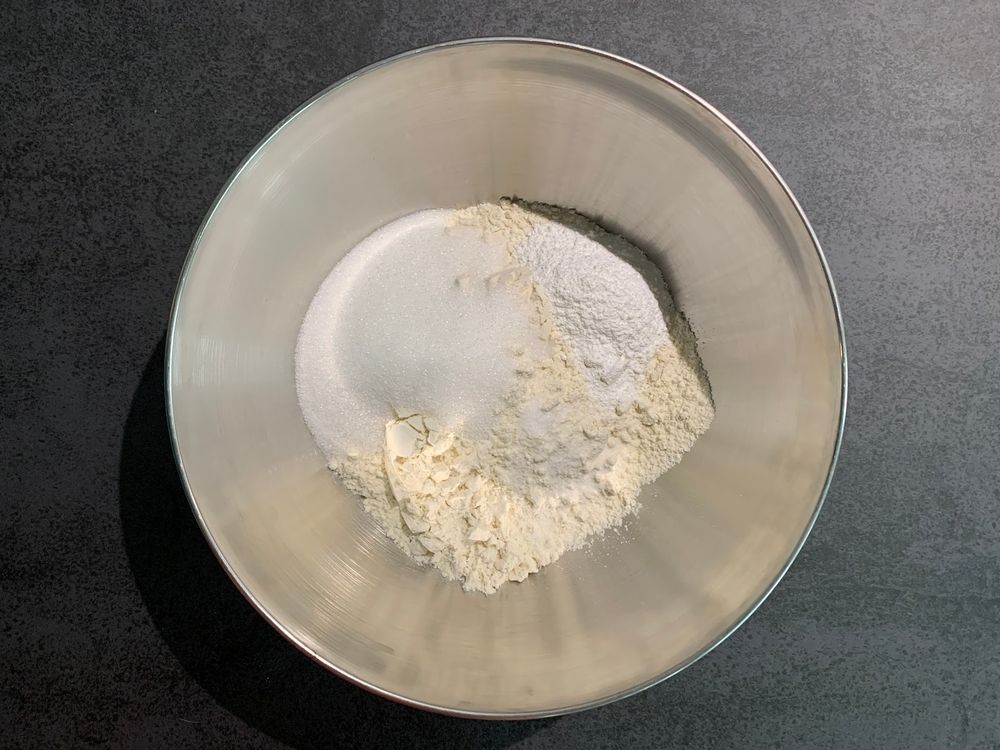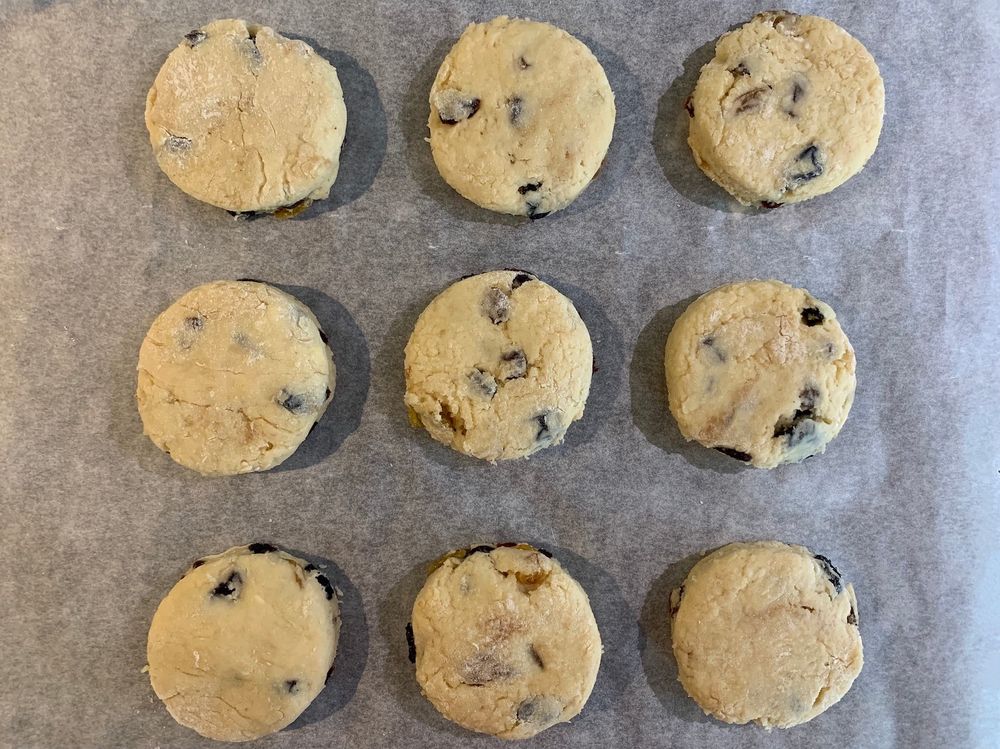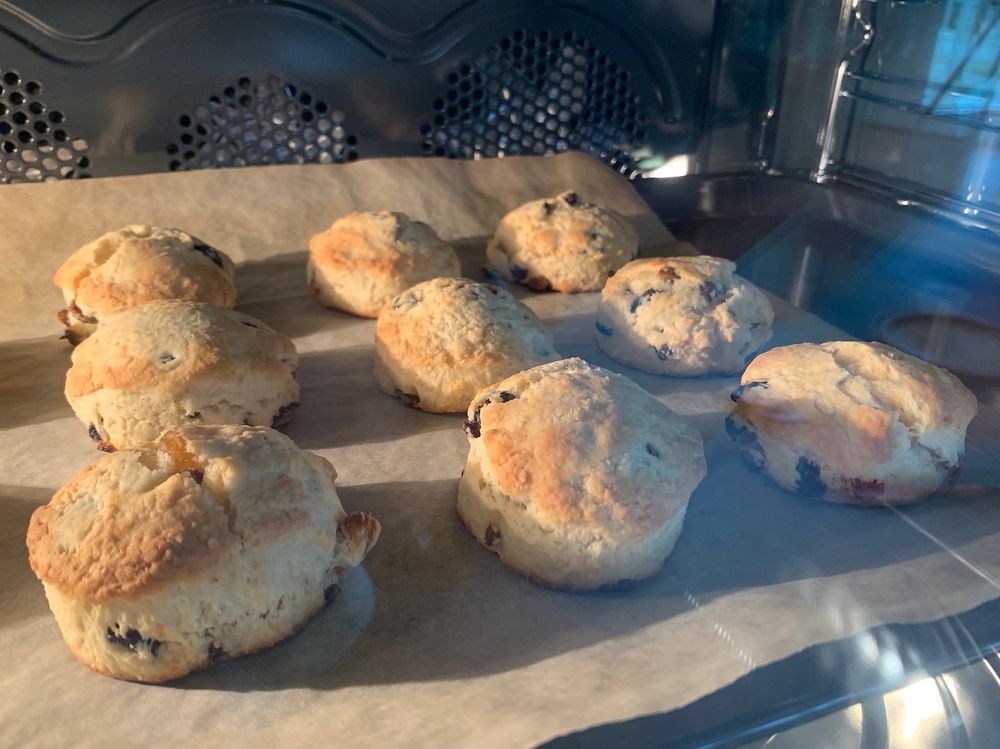Raisin Scones
Love from the very first bite
At some point, I don't remember where and when I tasted scones and it was love from the very first bite. They are not too sweet, not too dry, not too crumbly, not too wet…overall the scones are perfect! Then I tasted raisin scones and realized that these are the pastries that I’m ready to eat for breakfast, lunch, and dinner. If you have never cooked them, try it, this is one of the simplest recipes, and the result won’t leave anyone indifferent.
The origins of the name of this pastry are shrouded in mystery but I have a favorite theory: the word “scon” comes from the Dutch word "schoonbrot" or the German "sconbrot", which means white, clean, or beautiful bread.
Scones were first mentioned in the 16th century, and they became popular in the early 19th century. All thanks to Anna Maria Russell, Duchess of Bedford, a friend of Queen Victoria, who asked her servants to serve scones for afternoon tea, it was she who introduced this tradition. The story around afternoon tea is quite interesting! At the beginning of the 19th-century tea was transported only from China, which only accepted silver bricks as a form of payment. That was a big problem - there were not enough bricks. Long story short few decades later British got China “hooked” on opium and the circle was closed - opium was produced in neighboring India. That was so much easier to transport opium from India and get silver directly in China rather than carrying silver bricks across half the world. Then there was the First Opium War, then the second… But it's all history, don't blame scones!
But my story is not about that… So, scones, let's cook and enjoy them with clotted cream and jam for afternoon tea (by the way, don't confuse it with high tea).
Ingredients:
- 200 g (1 ¼ cup) flour,
- 50 g (¼ cup) sugar,
- 10 g baking powder,
- ½ tsp salt,
- 50 g cold butter,
- 150 g (¾ cup) cream 20,
- (optional) 1 tsp vanilla extract,
- (optional) 100 g (⅔ cup) raisins,
- (optional) 1 egg.

Process:
Dough:
- mix all dry ingredients - flour, salt, sugar and baking powder,
if you want to add something interesting, use zest - lemon, lime, orange - it doesn’t matter what exactly you add, the main thing is to grind it with sugar before adding the rest of the dry ingredients; - add cold butter to the flour mixture and grind it to crumbs,
you can do it with your hands, or you can use a food processor, the main thing is to try not to warm up the butter; - add liquid ingredients to dry ingredients - cream and vanilla extract,
- stir it just until it's almost fully incorporated,
- add raisins and stir until everything is incorporated; the dough should easily form a ball,
if you stir the dough for a long time, the scones will be more chewy, read this article to find out why;
at this point instead of raisins you can also add chopped nuts or other dried fruits; - sprinkle the counter top with flour and roll out the dough 1.5-2 cm thick,
- use a glass or a biscuit cutter to make circles,
if you use glass - dip it in the flour before cutting your scones; - put them in the refrigerator for at least 30 minutes, this will make the scones more tender.





Oven:
Preheat the oven to 200 °C.
Baking:
- beat the egg lightly,
- put the scones on a baking sheet lined with baking paper,
- lightly brush them with the egg mixture,
- bake until golden brown (about 12 minutes).


Published , updated







